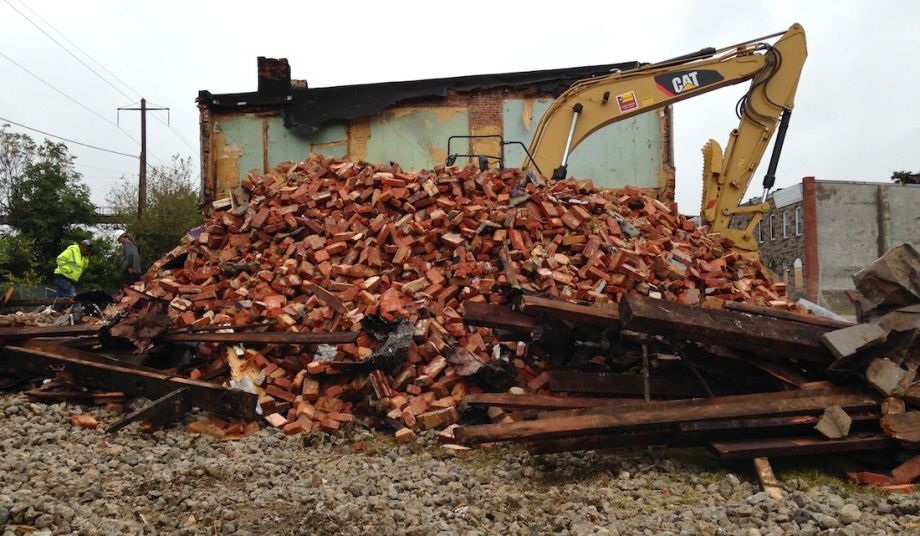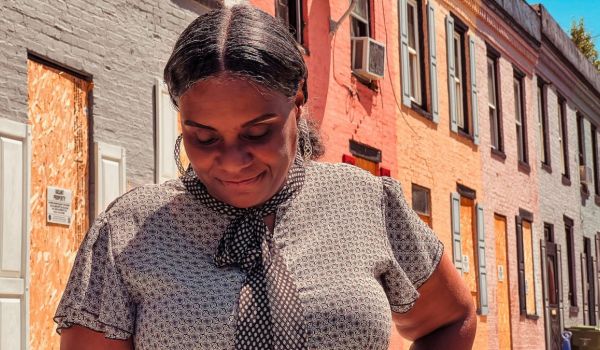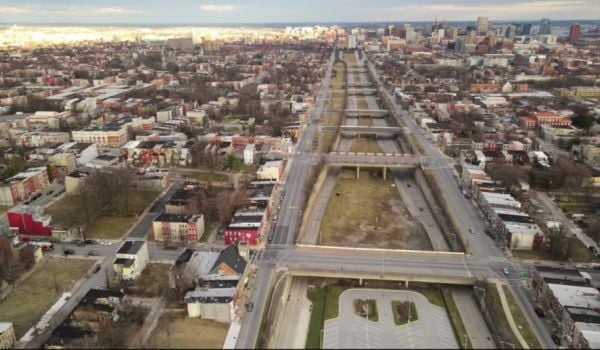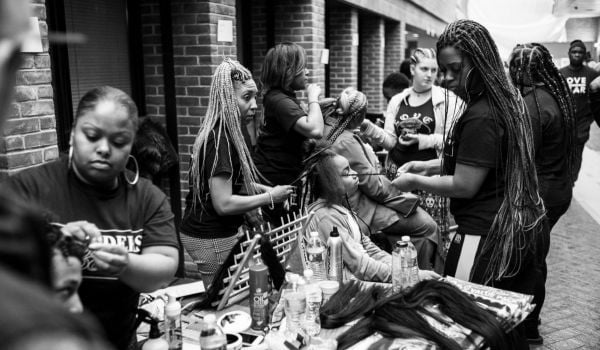Abandoned, decayed, distressed, dilapidated — these words are often used to describe vacant row houses in what has come to be known as “the inner city.” They fail to reflect the history of these neighborhoods, and the fact that these properties once had discrete financial and social values. On top of that, generations of residents called these houses home. The stories that once breathed life into a house are frequently glossed over in the discussions of current-day conditions.
With an aim similar to that of the highly praised Philadelphia art project Funeral for a Home, Baltimore Brick by Brick is a blog that’s recontextualizing how blighted neighborhoods are memorialized by sharing stories about the places as they are being taken down.
“The last blog post I wrote was actually about reconciling what we call blight with the fact that a lot of people lived in these houses,” says Max Pollock, a job site supervisor, salvage specialist, and blogger for Details. Details is the social enterprise arm of non-profit Humanim and salvages reusable materials as houses are disassembled.
They are currently slowly pulling apart the houses on a block of Eager Street in the Milton-Montford neighborhood of East Baltimore.
“It’s not just a maligned, blighted neighborhood, because that glosses over the fact that there are lots of memories here. There are lots of people that have real attachments. So we want to be pretty careful about how we talk about those neighborhoods. … With our blog, we wanted to make sure that the stories of the people who lived in those neighborhoods were just as prominent as pictures of abandoned buildings,” Pollock says.
Prior to being taken down brick by brick, Eager Street flaunted a mural by graffiti artist-turned-community organizer Steve Powers as a part of his “Love Letters” series. Ironically (or poignantly, depending on how you look at it), his mural that reads “FOREVER TOGETHER” is slowly dissipating as the links in this chain of row houses are being, well, consciously uncoupled.
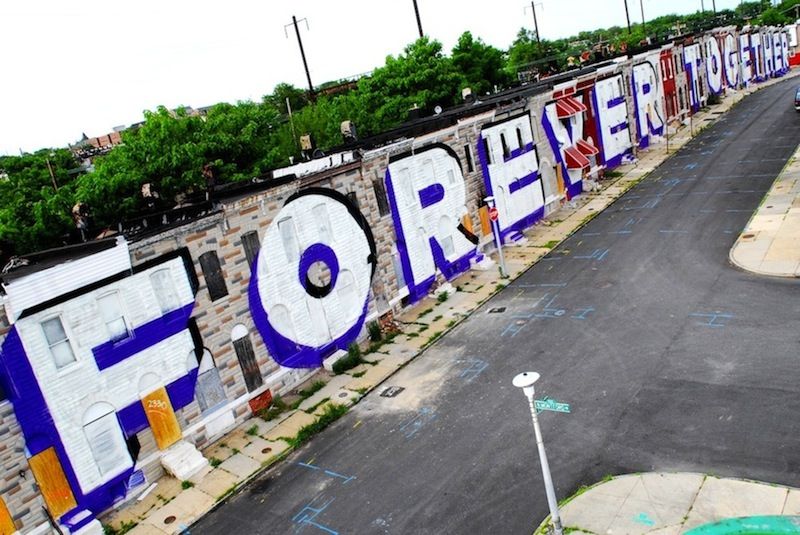
(Photo by Matthew Kuborn, @mkuborn, courtesy of ICY Signs)
Humanim was looking for a way to address local barriers to workforce entry and issues of vacancy, and Details’ salvage/deconstruction process reduces waste, provides building-trades training and employs locals.
“We approached the city and said, ‘Rather than bringing a wrecking ball to these buildings, what about if we tried this deconstruction approach?” Pollock says. “We sold it to them as a major job creator and something that’s way more environmentally friendly than demolition. Also, something that would potentially spur the local economy.”
Baltimore Brick by Brick helps spread the word about their work, but also helps to document the exhaustive facets of the project. There are profiles of the workers who are reentering the workforce and learning about construction. There are tutorials on joists and bricks. There are photos of stuff pulled from the rubble, like old glass bottles and a pair of Patrick Ewing sneakers. Most importantly, there are stories from the residents of the block, much of it sourced from a woman named Ms. Janice, who Pollock describes as “the unofficial mayor of the area.”
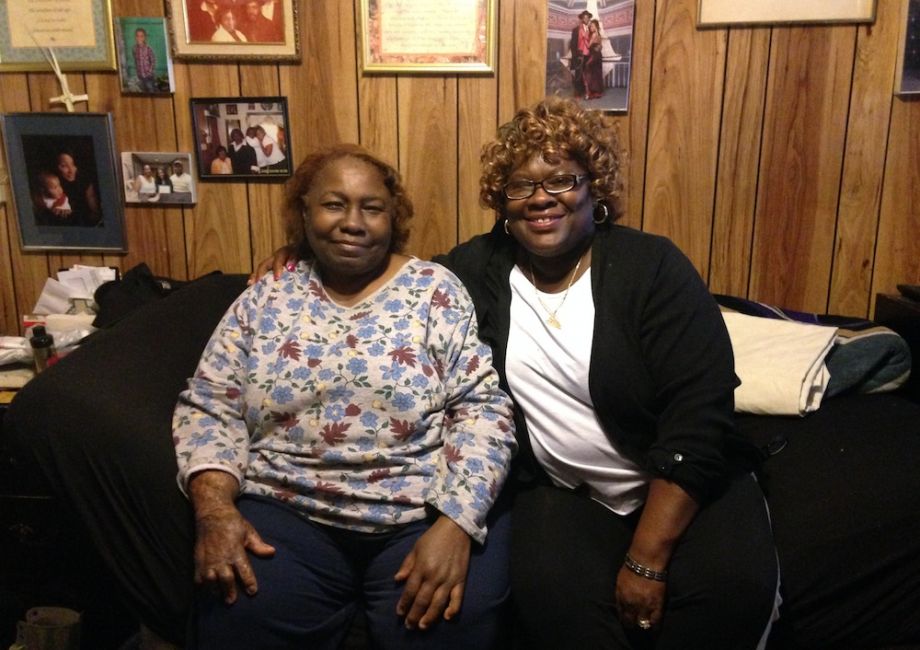
Ms. Janice and her mother. (Photo by Max Pollock)
“We didn’t really envision any agenda behind it,” says Pollock about the blog. “It was just an outlet for all the cool stuff that we were coming across through the stories from some of the workers. [We also wanted] to fill in a bit about the history of the neighborhood. It was a bulletin board of sorts for all the different aspects of this project that we were coming across.”
The blog also reads like an ode to a place-based building typology. “The Baltimore row house is iconic,” Pollock notes. “The marble steps are iconic. What’s been really great for a lot of the guys is by unbuilding a house, we’re seeing how it was built, how it was put together and the techniques that people used 100 years ago.
“Our hope is that for a lot of the guys who want to enter a trade, by now they are familiar with the terminology. They’re familiar with basic building concepts. A lot of guys when they come in, they don’t know what a joist is and so just by unbuilding it, they learn that. A block of row houses is an especially good way to work on that, because you’re seeing the same thing over and over. We have 35 houses that were built in the identical style. You get pretty familiar with how these houses were put together.”
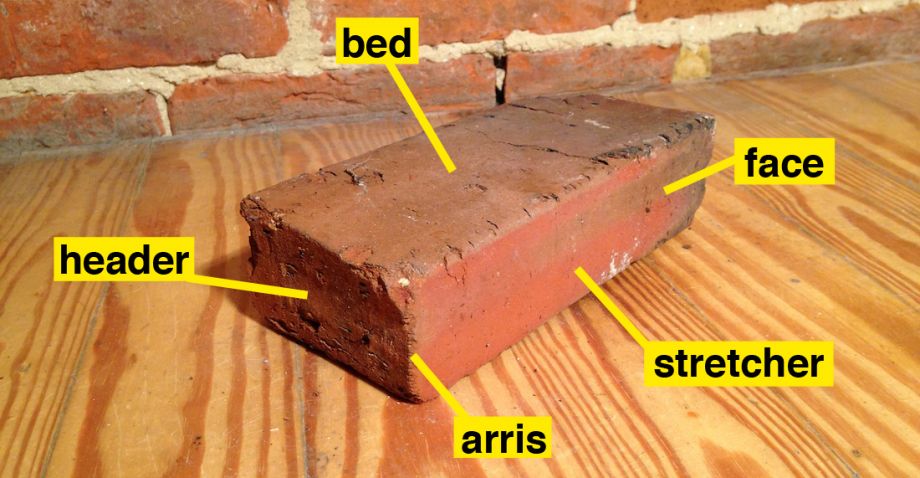
(Photo by Max Pollock)
You can put a price on the craftsmanship used in the original construction of these houses. And there’s demand for it, despite the perception of these blocks as impoverished. The lumber and historic brick that the Details team collects is being resold to be reused for local renovation projects. The profits are being used to pay the 25 hirees for the Eager Street project, and to hopefully sustain and grow future Details projects.
Deconstruction projects like this are slowly beginning to catch on. Pollock mentions that he met with a team that’s doing a similar project in Philadelphia. He says he was happy to “offer any support that we can give them — best practices, lessons learned, anything like that. It’s cool to see that this kind of thing is catching on.”
The Equity Factor is made possible with the support of the Surdna Foundation.

Alexis Stephens was Next City’s 2014-2015 equitable cities fellow. She’s written about housing, pop culture, global music subcultures, and more for publications like Shelterforce, Rolling Stone, SPIN, and MTV Iggy. She has a B.A. in urban studies from Barnard College and an M.S. in historic preservation from the University of Pennsylvania.


